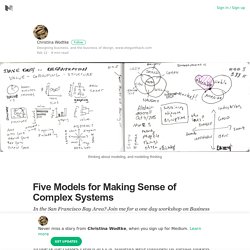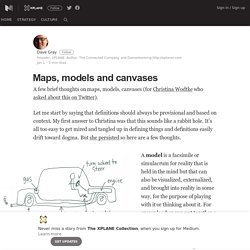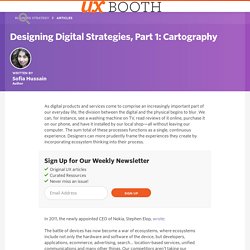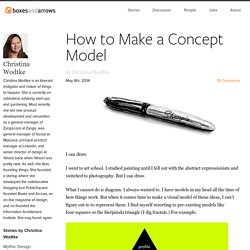

Using Sketching to Think Through Your Ideas. How to Make Paper Prototypes. The following is a short extract from our book, Designing UX: Prototyping, written by Dan Goodwin and Ben Coleman.

It’s the ultimate guide to prototyping. SitePoint Premium members get access with their membership, or you can buy a copy in stores worldwide. There are no rules for making paper prototypes––that is what's great about it. You need materials that are commonly found in any home or office, but if you have to buy them, they are relatively inexpensive.
What You'll Need At the very least you'll require paper and a pen––this low barrier to entry is one of the best aspects about this approach. We'd suggest the following items when undertaking a prototyping session: paper with a grid or dot grid (preferred)sticky notes (never leave home without them!) Items that are nice to have include: We’ll look at the possibilities involved in using different materials later in the chapter. Your Approach devicesscreenselementsinteractivity or state changes Devices Desktop or Laptop Tablet Phone Screens Menus. Don't Stop At Underlining. Hand-Sketching: Things You Didn't Know Your Doodles Could Accomplish.
Index cards. Take Smart Notes – Write … One Note at at Time. Paper is the real 'killer app' I think one thing this article hits on may be spot-on - at least in my recent experience - they mention this study: When I enrolled into the Udacity Self-Driving Car Engineer Nanodegree, I made the conscious decision to try taking "dead tree" notes.

Before, when I had done other machine learning MOOCs, I had taken notes using other methods, but I found that I didn't retain as much of the information after the courses were completed. So this time, having read that paper in the past, I decided to try longhand note taking instead. So far, I have found it wonderful - for the most part. Sometimes it is tedious. For my notes, I use 100 sheet single-subject grid notebooks with micro-perf tear-out sheets.
When I complete the course, I intend to write up an index, and move the notebooks into three-ring binders.
Five Models for Making Sense of Complex Systems – Christina Wodtke – Medium. In the San Francisco Bay Area?
Mind Maps, to gather your thoughts Concept Maps, to organize your understanding System Maps, to map the system (a tautology, but an accurate one) Mental Models, to understand and communicate your user’s understanding Concept models, to message a way to think about a complex system – samuelbausson
Join me for a one day workshop on Business Drawing for People Who Can’t In one of the classes I teach at CCA, students were confused by mental models, conceptual models, concept maps, etc.

I ended up drawing a taxonomy for models on the whiteboard, and it may help others. This post is for them first, then you! Admittedly, there is no worldwide agreement on these terms, because humans make things and name them as they see fit, often without searching for previous work. I live in hope of a controlled vocabulary for digital design. Let’s start with this model of models by Scott Berinato, author of Good Charts. These five diagrams are particularly useful for understanding complex systems. Maps, models and canvases – The XPLANE Collection – Medium. A few brief thoughts on maps, models, canvases (for Christina Wodtke who asked about this on Twitter).

Let me start by saying that definitions should always be provisional and based on context. My first answer to Christina was that this sounds like a rabbit hole. It’s all too easy to get mired and tangled up in defining things and definitions easily drift toward dogma. But she persisted so here are a few thoughts. A model is a facsimile or simulacrum for reality that is held in the mind but that can also be visualized, externalized, and brought into reality in some way, for the purpose of playing with it or thinking about it. Uber's virtuous cycle. Geographic density is the new network effect. Designing Digital Strategies, Part 1: Cartography. As digital products and services come to comprise an increasingly important part of our everyday life, the division between the digital and the physical begins to blur.

We can, for instance, see a washing machine on TV, read reviews of it online, purchase it on our phone, and have it installed by our local shop—all without leaving our computer. The sum total of these processes functions as a single, continuous experience. Creating Concept Maps. A concept map is a picture of our understanding of something.
List terms Edit the list Define the remaining terms Create a matrix showing the relations of terms Rank the terms Decide on main branches or write framing sentences Fill in the rest of the structure Revise Apply typography to reinforce structure Revise – samuelbausson
It is a diagram illustrating how sets of concepts are related.

Concept maps are made up of webs of terms (nodes) related by verbs (links) to other terms (nodes). The purpose of a concept map is to represent (on a single visual plane) a person’s mental model of a concept. Concept maps provide a useful contrast with essays. With a concept map, a viewer can see both the forest and individual trees. How to Make a Concept Model. I can draw.

I went to art school. I studied painting until I fell out with the abstract expressionists and switched to photography. But I can draw. What I cannot do is diagram. A Visual Vocabulary for Concept Models – Christina Wodtke – Medium. Proposition Pourquoi ne pas présenter tous les sondages ainsi ? (notez que l'égalité des 4 à 21% a la même probabilité que les autres cas)